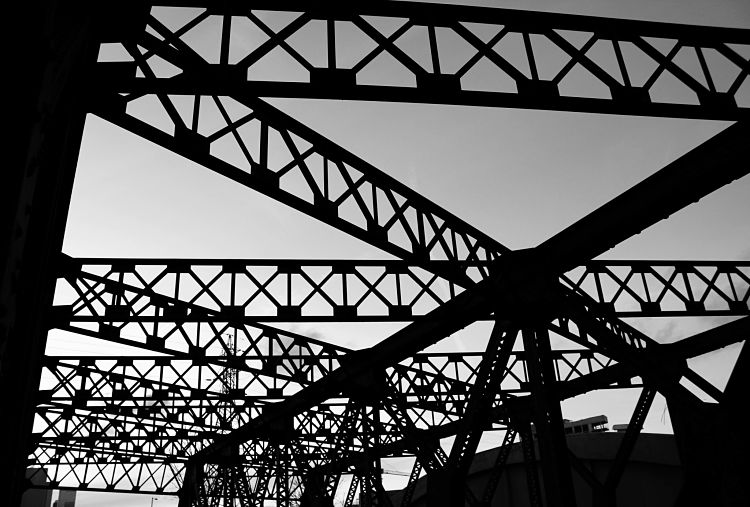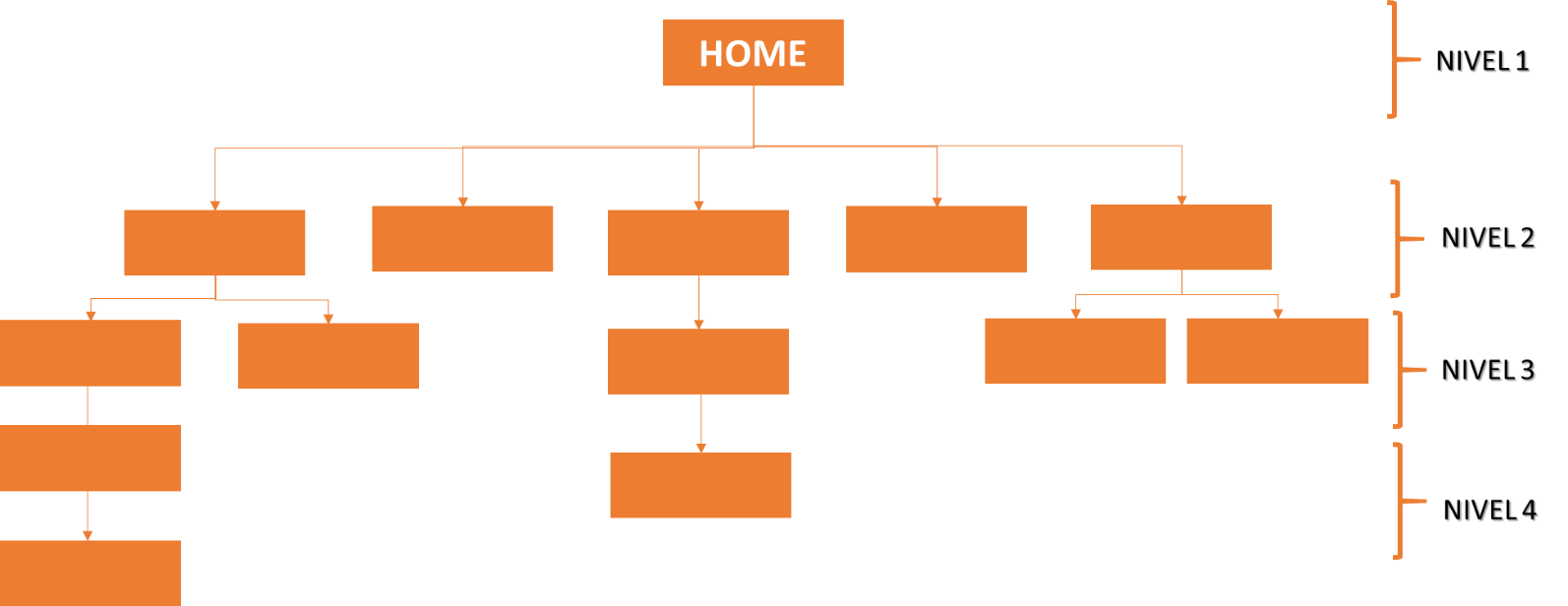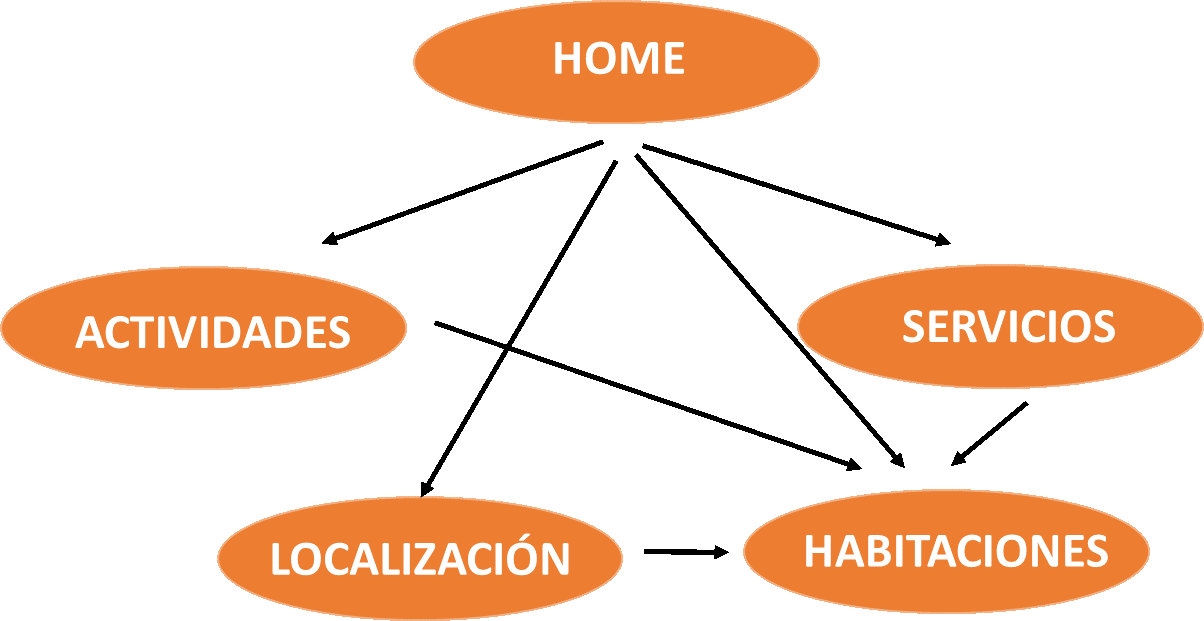
Create a SEO information structure for your website
When we start designing a website from scratch, one of the factors that must be kept in mind is the information architecture or content tree. This phase is the most important and will define the success of the project.
What needs to be kept in mind to develop the right structure? Before we do anything else, we have to analyze the business model, the target audience we’re looking for, and the product or objective of the site.
Once we have this clearly defined, we can begin to inventory and categorize all the information we have. We should define which section will be the main one (from which we can access any part of the site), and then define the subsections.
It’s important that the structure not go beyond the fourth level. That is, the user should not have to click more than 4 times in order to find the information they are looking for. Otherwise, we could end up confusing them and losing them. And we definitely don’t want that to happen!

That’s why we recommend that the site have a structure which is more horizontal than vertical, in order to avoid levels which are too deep.
In addition to this hierarchical model, there is also a network model. This model is useful when the content we have on each page needs is amplified in other sections. This is how we can achieve an inter-relationship between all the pages and enhance the SEO of the site.
This is frequently used by online stores where they try to relate one product with another similar one.

Another is the sequential model. This model is based on putting the pages in a logical order, where one page follows another in order to understand the content’s full context. For example, if we have a dance school, in order for the user to correctly select the class they want, they need to select different options before reaching their final selection.
The navigation which takes the user to the type of dance class they are looking for would be achieved by clicking on various options,- for example

Location Age Gender Dance
Interlinked pages
As was said earlier, the internal linking on the site is important, not only to facilitate navigation by the user, but also to improve the SEO visibility for each page and to be able to give more weight to the ones we are interested in.
By using internal linking, we have the possibility of shifting the authority or link juice from the strongest pages to ones which are not as strong but which we want to move up in the ranking.
In the example below, the site is for a hostal. Where we have the Home page (main section), it will link with the rest of the pages. But we may also find that the ROOMS page is the one which gets most conversions, so we will give it priority also. In this case, we will link the rest of the sections to ROOMS, in order to channel the traffic and have the Google crawler identify it as an important page.

What’s the best name for each section?
Setting up the naming for each section is a critical job. To do this, it’s recommended that the names be: easily read, intuitive (that they represent the content contained on the page) and be oriented towards the user search trends. (That means that you need to do prior Keyword Research and select those names which are the target of SEO searches). With this keyword study, we’ll be able to detect which interests the users have regarding our product and then we can establish our priorities.
The keywords which are placed in the sections closest to the root will be more powerful and will rank higher.
URL structure
A strong information structure should have a URL structure which is well defined (this avoids having to make 301 re-directions later). We can create this using folders and a hierarchical structure.
IMPORTANT! They should be easy to read, user-friendly, and optimized. For example, domain.com/level-2/level-3/level-4

Once everything else has been defined, we can focus on the SEO optimization for each page that will make up the site, so that each page can be a perfect landing page for SEO. We need to define the factors on the page, meta tags, Hx headers, interlinks, text anchors, bold words,… and above all, the text has to be at least 300 to 400 words long and not contain any duplicate content.
Photo by Allen Lai
Artículos relacionados
Internet República
Latest posts by Internet República (see all)
- New Instagram update: reel achievements - 19 October, 2023
- Elon Musk has bought Twitter. What does this mean? - 27 April, 2022
- NFTs ARE ARRIVING ON SOCIAL MEDIA - 21 February, 2022






